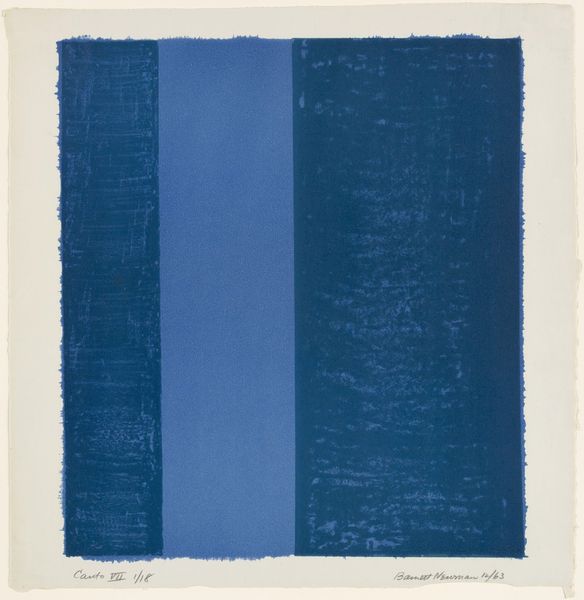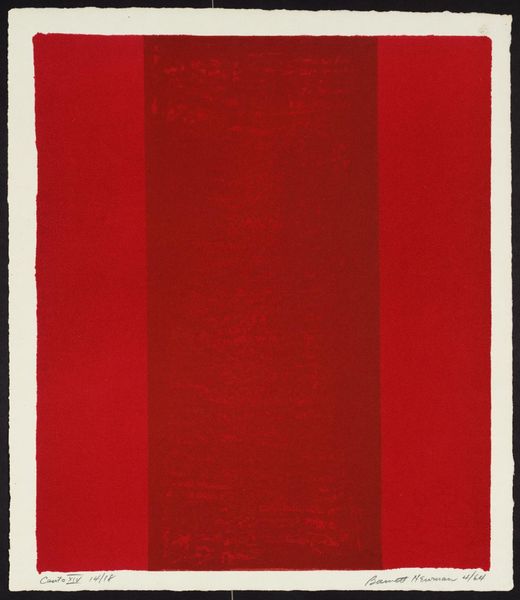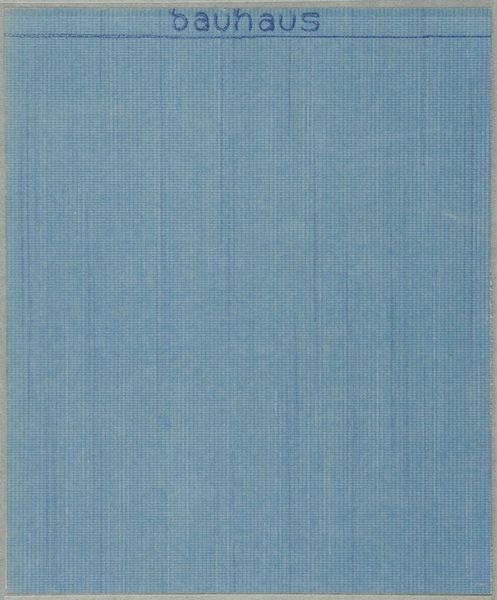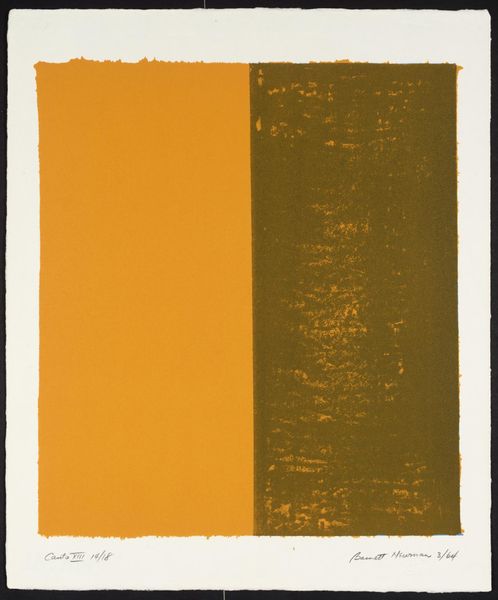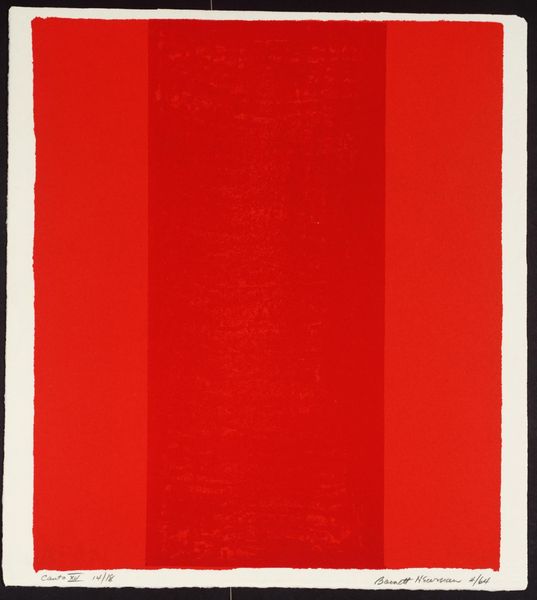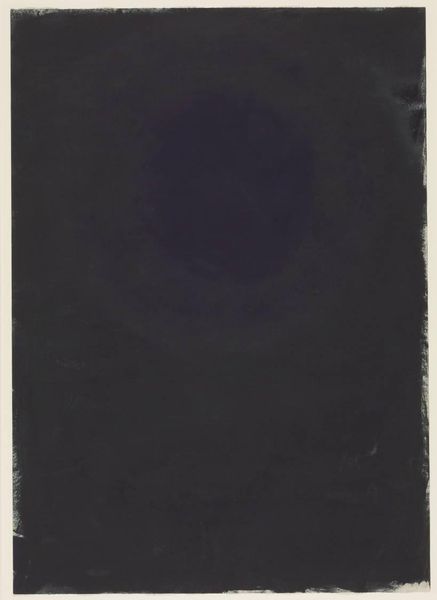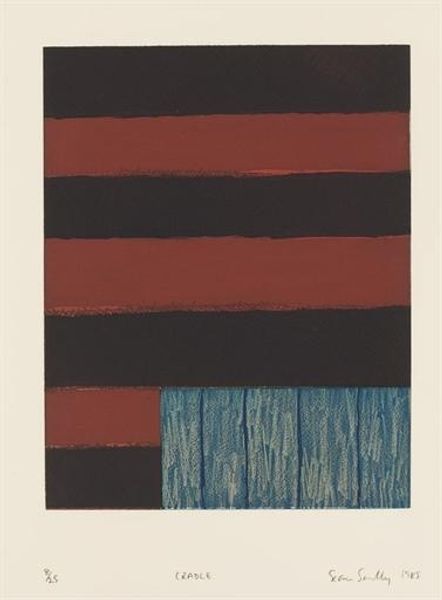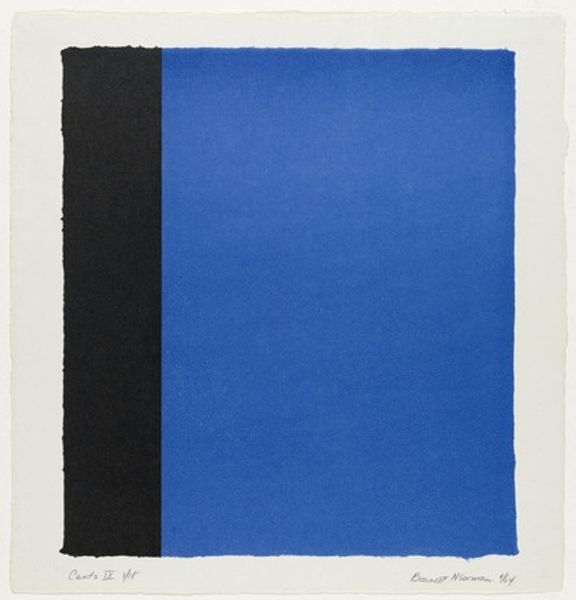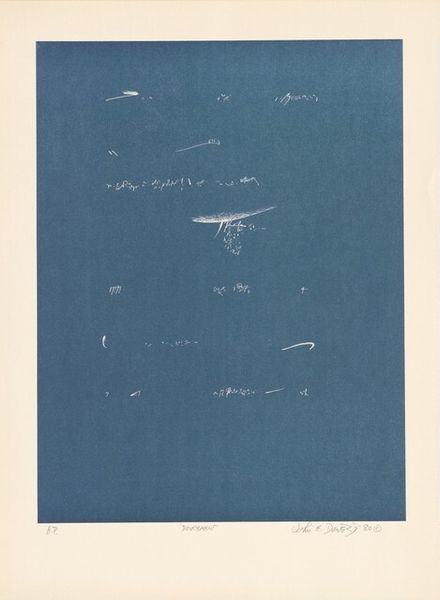
print, paper, ink
#
abstract-expressionism
#
ink paper printed
#
minimalism
# print
#
paper
#
ink
#
geometric-abstraction
#
abstraction
#
watercolour illustration
#
monochrome
Copyright: Barnett Newman,Fair Use
Editor: Here we have Barnett Newman’s “Canto VIII” from 1964, a print made with ink on paper. The piece is split into two columns of differing blue hues. I’m immediately drawn to the texture of the ink on the paper. How would you interpret this work, thinking about materiality and production? Curator: Let’s think about this print in the context of post-war America. Abstract expressionism, while seemingly divorced from the everyday, was still *made*. Look closely. Notice how Newman exploits the qualities of ink, allowing it to saturate the paper unevenly. Do you think that reflects a rejection of mass production prevalent at that time? Editor: Perhaps, it is a turn toward craft. The slightly ragged edges of the colour fields also make me think of a textile. Curator: Exactly! It challenges the hierarchy that places painting above ‘craft,’ especially in the treatment of the surface. Think about the labour involved. There is an element of control but also chance in how the ink behaves. And consider, too, that these "Cantos" refer to sections of a longer poem… How does seriality play into the artwork, particularly the edition number, 14/18? Editor: So, it is meant to be seen as part of a whole? That opens a discussion about artistic production versus commodity since there are multiple prints. Curator: Precisely. This work raises questions about what constitutes "originality" and the artist’s hand in an age of mechanical reproduction. How does the fact that this is one of many affect its aura, its value? Editor: I see that shifting the focus from simply *what* is represented to *how* it’s made really unlocks a new dimension to understanding. Thanks! Curator: Absolutely! Examining art through a materialist lens reveals the complex interplay between art, labor, and the socio-economic context.
Comments
No comments
Be the first to comment and join the conversation on the ultimate creative platform.
